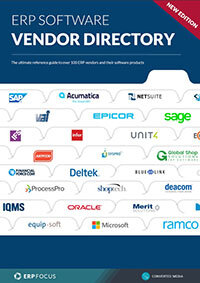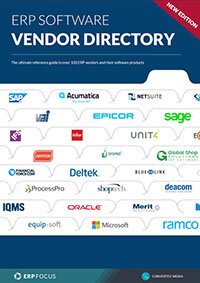ERP Software and The Theory of Constraints
ERP systems will help a business by providing a common set of tools that can be used across an enterprise to plan for and control the execution of actions at each resource. That is a big definition and ERP systems tend to be big, expensive, and somewhat complicated.
The Theory of Constraints, or TOC, is often seen as an alternative to ERP. TOC assumes any organization exists to achieve a goal. It also assumes that there are a small number of constraints in any organization that hinder progress toward that goal achievement. Those constraints are usually equipment, people, or policies. Any of us can look around our business and see more than a few constraints, many of them are hindrances but do not truly limit our ability to meet our goal.
Scheduling in an ERP system begins with a due date of an order and tries to start as late as possible and still meet the date or it starts with today and tries to complete the work as soon as possible, often well before the due date. Scheduling through a plant uses production rates and time or units of production capacities to schedule each resource.
Drum, Buffer and Rope
TOC uses a simpler approach. It begins with identifying the constraint that seems to be the most limiting. For the most part any other resources are scheduled around the constraint ignoring efficiencies and other measurements. Whatever rate of production can pass the constraint is the ultimate rate that can pass through the whole plant. That rate is the drum beat. Think of the Roman warship with slaves rowing toward an enemy with a drummer beating a cadence for the rowers. They can speed up only so much so drawing the bows or lighting the Greek fire too soon is a waste of effort.
Whatever rate of production can pass the constraint is the ultimate rate that can pass through the whole plant.
Schedule production in your plant around that drum beat. Next, set up buffers ahead of the constrained resource to ensure that it is never starved due to any unforeseen irregularity upstream. That drum beat should never stop. Set up a buffer just downstream of the constraint too so that a downstream problem can never break the constraints output.
The buffer can be inventory. It also could be reserve resources. Whatever works in a particular environment never allow the constraint to break from its drumbeat.
Finally, a rope is tied to all the other resources so that they never fall too far behind the constraint or get too far ahead. Falling behind a little is not a problem because another resource can achieve greater throughput than the constraint. Getting too far ahead is simply a waste to be avoided.
Together this drum, buffer, and rope approach makes TOC a simple system to implement. Use the ERP to manage the constraint. Schedule upstream resources to keep the buffer full using a mix of forward and backward scheduling. Schedule downstream resources always forward from the output of the constraint. ERP works on rules and those rules can be taken from TOC easily.
Free white paper

ERP Software Vendor Directory
Put the most comprehensive ERP vendor directory on your desk today

Related articles
-

How to use ERP workflow to improve supply chain management
Learn how automated ERP workflows can improve order management, production scheduling and more su...
-

Secret KPI: Why Your ERP Implementation Team Matters More Than Software
Learn how Godlan ensures successful ERP implementation for manufacturers with proven strategies &...
-

QuickBooks vs ERP: What ERP does better
Could your accounting & inventory management benefit from upgrading to ERP?

